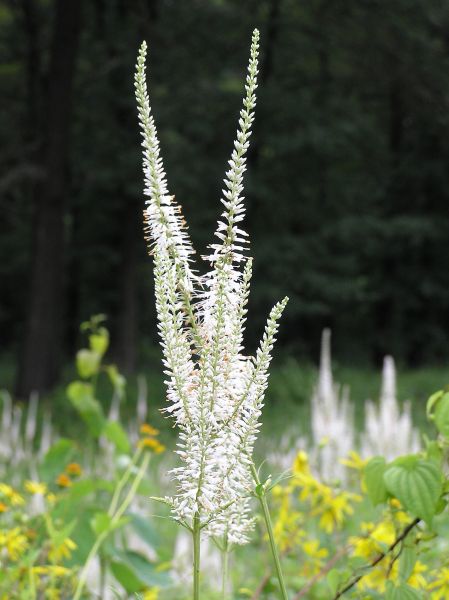
Here’s a stunning flower that blooms in western Pennsylvania from June to September. I notice it on my travels in late summer.
Culver’s Root (Veronicastrum virginicum) is tall and showy – two to five feet tall with five or six densely packed spikes of small white flowers. The flowers turn brown quickly so it won’t always look as perfect as this.
The most curious thing to me about Culver’s Root is that it’s native to both eastern North America and to Asia. I wonder how that happened… Did birds carry its seeds?
If you’d like to see it in western Pennsylvania, visit Jennings Prairie in July.
(photo by Dianne Machesney)
On the last point about similar flowers in the Americas and Asia: I got a Native Plants certification from Phipps, and the way it was explained in our classes was that, millions of years ago when the continents were closer, the plant species spread around to all of the continents so all continents should have had similar plant life.
Eventually the continents became separated, and when the glaciers advanced, they pushed the remnants of the plant life (including seeds) South. In the Americas and Asia, the mountain ranges run pretty much North/South, so the plant life got pushed along the valleys to the southern edge of the glacier fields, where they seeded themselves and grew until the glaciers retreated. Then the plants gradually migrated North again as the glaciers retreated and exposed the ground.
In Europe, the mountains run in a pretty much solid East/West line. So the glaciers pushed the plant life up to the top of the mountains, where it couldn’t survive, and many of the plant species died out. That’s why we have American and Asian versions of plants (like rhododendrons and magnolias), but there are not any equivalent European species.
Mary Ann, thank you so much for posting this information. What a cool thing that the direction of the mountains made such a difference!